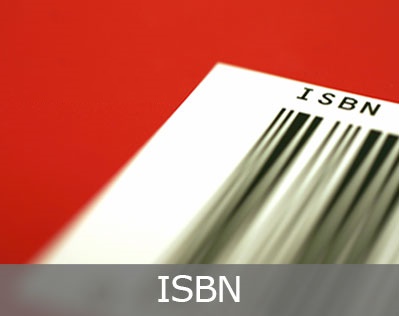978-0-7852-6400-2
978-1-62184-113-5
978-1-4245-6490-3
No, these are not the plays being called by a quarterback during a football game. They are the ISBN numbers on the back of three different books by three different authors. Kudos to the first person to identify the three titles in the comments below.
Origins
In the mid-60s, a major British bookstore chain (W.H. Smith) moved toward a computerized inventory system and needed a standardized numbering system to identify which books were which because different books might share the same title. Over time, they implemented the BSN or Book Standard Number system.
Other retailers in other countries saw the benefit of this and joined together to create an international group that would administrate this effort. Hence, the “I” for International Standard Book Number (ISBN).
Originally, it was a 10-digit number. But in the early 2000s, there was concern that they might eventually run out of numbers with the proliferation of books being published. So in 2005, they changed to a 13-digit number beginning with a 978 prefix. The inventory for the 978 prefix was exhausted in 2022. New ISBNs issued now begin with 979.
Please remember that the number is not the barcode. The barcode is generated by the number and is embedded in the funny lines. You can have an ISBN without a barcode but not a barcode without some number.
Confusion
In the mid-90s, I was part of a meeting in New York with the Book Industry Study Group (BISG) that discussed this transition from 10 digits to 13 digits and the retail implications. The challenge was that many bookstore computer systems were programmed with a field (or input box) only ten numbers long and could not accommodate the 13 digits. It was a programming problem that took some time to implement across every retailer.
For example, did you ever notice that the old Borders bookstore chain put price stickers on the back of their books that covered the barcode and the ISBN? They used their own in-house, proprietary numbering system to avoid all the confusion as the industry was going through multiple changes. Plus their stores didn’t only sell books, which created another problem.
Note that the “B” in ISBN is for Books. Nonbook items like music, clothing, etc., have a different set of numbers called UPC (Universal Product Code). And it is a 12-digit number.
Confused yet?
For a long time some nonbook retailers would not carry a book unless it had a UPC code on the back or on the inside front cover. This is no longer a problem; but 25 years ago, if a publisher wanted to sell books in Walmart, they had to print both a UPC barcode and an ISBN barcode on a book. Some mass-market paperbacks had a barcode on the inside of the cover for that purpose.
You may vaguely remember noticing the clerk opening the book cover and scanning the inside barcode at the register and not the code on the back of the book. Now you know why.
Anatomy of an ISBN
What do the numbers mean? Or are they random numbers sequentially generated?
Look at this ISBN: 978-1-61626-639-4
There are five parts to the number (note the dashes in the above number?).
The first three numbers mean “This is a book.” In the international rules, the prefix is supposed to identify the country of origin. But since all books are supposed to start with 978, and now 979, the committee named this country “Bookland.” Believe it or not. (I want to live in Bookland. Care to join me?)
The next digit refers to the country, geographical area, or language area of the book. Usually, it’s either a 0 or a 1.
The next five numbers refer to the publisher or imprint. When I was the national buyer for a bookstore chain, I got so used to dealing with ISBN numbers that I could identify a publisher by its ISBN without seeing the book. 031032 was Zondervan. 080285 was Eerdmans. 155661 was Bethany House. (But those never appeared on a Trivial Pursuit card, so the information was useless outside of work. Unfortunately, I still remember them.) By the way, the publisher’s number can change when a new set of ISBNs are assigned. At some point, the publisher will run out of their allotment, so they get issued a new identifier. You may notice that if one publisher buys another publisher, eventually the new owner’s identifier takes over with new books.
The next three numbers identify which title it is.
The last number is a check digit. Why? My guess is to avoid issuing sequential numbers that would create numerous data entry errors. If you are a math whiz, go to this link for the check digit calculation formula. Beware. Looking at the formula too long may be hazardous to your health. At one point in my life, I contemplated being a math major. I also took accounting and statistics classes. But this formula is rather taxing (no pun intended).
This is why some ISBNs end with an X. (It’s not because it’s censored. It’s not because it was for a book published by a company formerly known as Twitter.) It is a function of the check digit formula. If the formula’s answer is any number between 1 and 9, that number becomes the last one in the ISBN. But if the formula’s answer is 10, which is a possibility, then they use an X instead.
Do You Need an ISBN for Self-Publishing?
To further confuse the issue, if you self-publish and plan only to use Amazon’s Kindle Direct Publishing program (KDP), you don’t need an ISBN because Amazon will issue you an ASIN (Amazon Standard Identification Number) for your product. But realize it keeps you inside the Amazon economic system. The number cannot be used anywhere else.
If you want to sell your book elsewhere, like a non-Amazon online store, a physical bookstore, or a library, you must have an ISBN. Plus, you will need one for your paperback edition and a different one for your ebook edition.
ISBNs can be obtained from Bowker in the US. For Canada try this link. The numbers can be used globally but are issued locally in the originating country.
Be the Life of Your Next Party
The next time you are at a party and want to amaze your friends, take a book from the shelf, turn it over, and take your audience on a thrill ride through that little 13-digit number. Regale them with tales of Bookland. You’ll be glad you did.
[This post was originally published in 2014 and has been update for today’s reader.]



